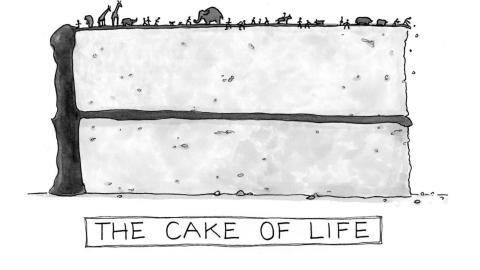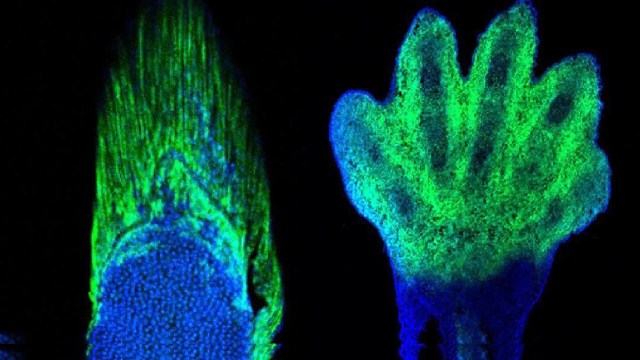Each Of You Is A Multitude, Here’s Why

1. Your view of how life works, and of what you are, will be transformed by Ed Yong’s book I Contain Multitudes. It works like a text-microscope, a device to show you what you can’t otherwise see or fathom. It reveals seismic shifts are afoot in biology.
2.Life is often framed as a game of genes and genomes. Selfish genes cooperate with genome-mates, forming individual players (Dawkins’s “vehicles”) in evolution’s “red-in-tooth-and-claw” competition.
3. Yong calls that individual-centered view “a pleasant fiction.” Life takes large-scale cooperation (or partnerships) far beyond the inherited genome. For instance, human cells have ~25,000 genes but leverage ~500 times more microbial genes. Your body harbors ~30 trillion human cells and ~39 trillion microbial cells.
4. Humans and our cohabiting microbes (our microbiome) are so entangled that certain sugars in mother’s milk feed her baby’s gut microbes, not her baby (which can’t digest them). And such cross-species metabolism is very common.
5. A genome generally doesn’t contain all the genes an organism needs. Even anatomies aren’t just an unfolding of inherent traits. Bodies are “continuously built and reshaped,” by complex conversations with our surrounding sea of microbes.
6. By leveraging microbial genes, we can evade evolution’s slowness. They’re a form of fast intra-generational “adaptation,” letting us add biochemical capabilities we didn’t ourselves evolve. Microbiomes are like aftermarket add ons, or plug-and-play peripherals on biology’s “USB“ ports.
7. Yong’s “we” can be one of the widest “we’s” ever used—it often means all multicellular life.
8. So seismic are the shifts Yong describes, that they are shaking out new concepts, terms, and metaphors. For instance, holobiont, hologenome, horizontal gene transfer, and dysbiosis.
9. “Every natural animal and plant is a holobiont consisting of a host and diverse symbiotic microbes and viruses.”
10. So symbiosis isn’t rare, it’s the rule. We (that wide we) have always been surrounded by teeming microbes. They arose 2 billion years before us. We plug into their biosphere. We’re the icing on a vast microbial cake.
11. One species relies so heavily on symbiont services that it has no mouth, no guts, no butts.
12. Symbiotic partnerships are of many kinds. The can’t-live-without-you kind. The harmless kind. The destructive/parasitic kind. They’re not conflict-free, and can shift kinds. But discernible principles govern stable survivable partnerships (e.g., suppressing selfish cheating for health of the whole).
13. This new worldview pushes Yong to try many new metaphors: You’re a garden, a zoo, a city, a colony, but most usefully you are multiple complex ecosystems (forearms = dry desserts, nasal cavity = moist jungles). That metaphor helps us reimagine immune systems as park rangers, not defending armies.
14. Yong feels microbes are badly branded. Most microbes aren’t our enemies (pathogens = a tiny fraction). And labelling microbes as “good” or “bad” often doesn’t make sense.
15. “Dysbiosis” is caused by microbiome imbalances (~like disrupted ecological webs). It’s implicated in many diseases.
16. How this alters biology’s big picture isn’t clear. E.g., whether it’s survival-of-the-fittest “hologenome” is hotly debated (see here & here, hat tip to Seth Bordenstein for that last balancing link).
17. I’d suggest enlarging Dawkins’s vehicle idea. Every gene needs its vehicle-mates to thrive, but also its microbiome genes, to varying degrees, sometimes just as much (suggesting selection might operate on this new kind of group level).
18. Microbial partners are non-genetically “inherited,“ passed on environmentally (like constructed niches).
19. Microbes run bustling gene-trading marketplaces, horizontal gene transfer is common.
20. Yong’s text skillfully zooms between biochemistry and the entire biosphere, entertainingly adjusting its depth of focus to reveal major changes. They’re almost like a biological Copernican shift, correcting a myopic individual-centered mindset. Yong says, “perhaps it is less that I contain multitudes and more that I am multitudes.”
Illustration by Julia Suits, author of The Extraordinary Catalog of Peculiar Inventions, and The New Yorker cartoonist.





